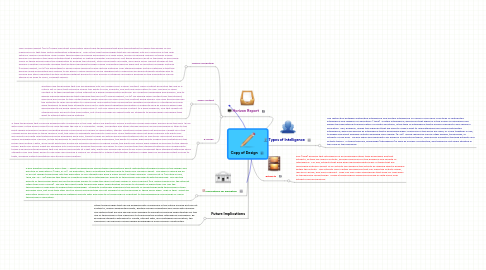
1. Horizon Report
1.1. Mobile computing
1.1.1. The Horizon Report (2010) offers important information about new technologies that have the potential to rework the design of our classrooms so that they foster distributed intelligence. One of the new technologies that we can design into our classroom in the near future is mobile computing. New mobile technologies are being developed on a daily basis, and an increasing number of these mobile devices can perform the same activities that a desktop or laptop computer can perform; yet these devices can fit in the palm of your hand. Many of these devices have the capabilities to browse the internet, store documents and data, and check email. Recent studies at the Abilene Christian University showed that lectures delivered through mobile computing devices were just as effective as paper lectures (Horizon Report, 2010) An advantage to using mobile devices to give lecture materials over standard paper lecture materials is that the devices allow universities and schools to go green. Mobile devices can be designed into classrooms by giving students another way to receive and store important lecture materials without having to carry around a notebook and pencil because all the information can be stored in an easy to carry, compact device.
1.2. Open content
1.2.1. Another new technology that can be designed into our classes soon is open content. Open content promotes the use of a critical set of skills that everyone needs: the ability to find, evaluate, and put new information to use. The goal of open content is to take advantage of the Internet as a global dissemination platform for collective knowledge and wisdom, and to design learning experiences that maximize the use of it (Horizon Report, 2010). By sharing open content over the internet, everyone has access to the content which means anyone can learn from the content being shared. This new technology has the potential to relay information to classrooms much faster than receiving the updated information in a textbook and may allow teachers to keep their students more up-to-date about updating information in subjects such as science where new developments are being made on a daily basis. It not only opens up course content to a wide audience, one that might not otherwise have access to the information, but it also provides an opportunity for students to decide when and where they want to interact with course material.
1.3. E-books
1.3.1. A third technology that could be designed into classrooms in the near future are electronic books. Electronic books have been around since the early 1970s with many of the books meant to be read through the use of a computer. Today, computers and other storage devices can hold hundreds of titles to the point where someone's mobile computing device could serve as a library of information, literally. Electronic books have not previously caught on in the college world because of three reasons. First, the issue of availability was hard to overcome. Many textbooks have not been scanned into electronic documents and with new textbooks being published each year, trying to keep up with scanning each textbook into an electronic document has been simply overwhelming. Second, as the technology to read the electronic books developed, the ability to render high quality images and illustrations in the books was limited. Lastly, since most electronic books are scanned versions of regular books, the electronic books were viewed as ancillary to the regular books. Electronic books might be designed into classrooms because the books are easier to carry around than the standard textbook and coupled with today's advancing technologies that can search documents at a fast rate, electronic books may serve to be more convenient than standard textbooks since students may find them easier to use.They also provide a chance for students to interact with textual material in news ways by providing instant access to texts, allowing instant annotation and storing of information.
